Deadly smog returns to Delhi after Diwali
 Image copyrightREUTERSImage captionResidents awoke on Thursday to find the city blanketed in a toxic fog
Image copyrightREUTERSImage captionResidents awoke on Thursday to find the city blanketed in a toxic fogAir pollution in the Indian capital has risen to hazardous levels after firecrackers were set off to celebrate Diwali despite a court ban.
Residents awoke on Thursday to find the city blanketed in a toxic fog.
The Supreme Court had restricted the timeframe for setting off firecrackers to only two hours in the night, but the order was openly flouted.
Diwali, the most important Hindu festival in north India, celebrates the victory of good over evil.
The levels of tiny particulate matter (known as PM 2.5) that enter deep into the lungs reached as high as 999 micrograms per cubic metre in some areas of the capital on Thursday morning, according to reports.
- Delhi smog: Foul air came from India's farming revolution
Last month, the Supreme Court said it wanted to test if banning fireworks would make a difference to Delhi's air quality, ranked among the worst in the world.
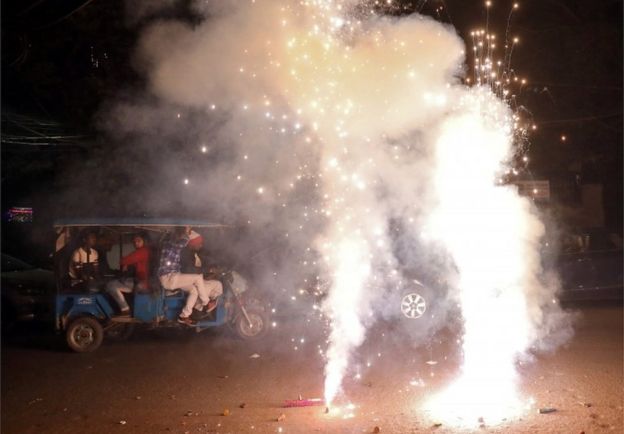 Image copyrightREUTERSImage captionDespite restrictions, residents set off firecrackers until late on Wednesday night
Image copyrightREUTERSImage captionDespite restrictions, residents set off firecrackers until late on Wednesday nightBut despite the restrictions and the two-hour deadline on the night of the festival, residents of Delhi continued to burn firecrackers until late.
People took to social media to express their frustration over residents flouting court orders with impunity.
Twitter Ads info and privacy
barkha dutt
✔@BDUTT
Dear Delhi: we just let ourselves down with this brazen contempt of the Supreme Court. We were better than this, I thought...
10:31 PM - Nov 7, 2018
Report
End of Twitter post by @BDUTT
Skip Twitter post by @swarup58
Twitter Ads info and privacy
Anil Swarup
✔@swarup58
Long ago I was told that there was no culture in Delhi but a "vulture". Today I discovered that we are worse than vultures. We feed on ourselves. How else do you explain crackers going on in brazen violation of court orders, leaving behind choking smog putting all of us to shame.
12:18 AM - Nov 8, 2018
Report
End of Twitter post by @swarup58
Skip Twitter post by @iamhorcrux
View image on Twitter
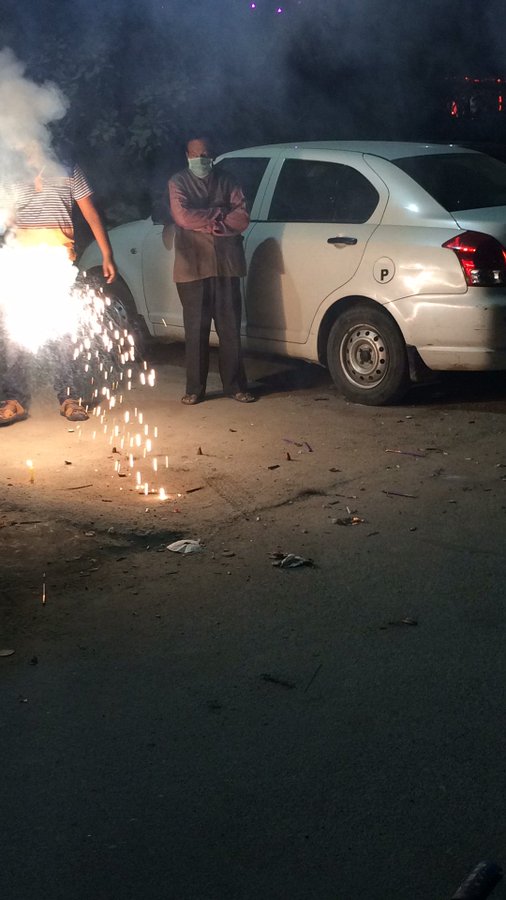
Twitter Ads info and privacy
cosmic noodle@iamhorcrux
Peak Delhi is people bursting crackers while wearing pollution masks. Wow. I have no words.
10:08 PM - Nov 7, 2018
Report
End of Twitter post by @iamhorcrux
Skip Twitter post by @Reetzzy
View image on Twitter
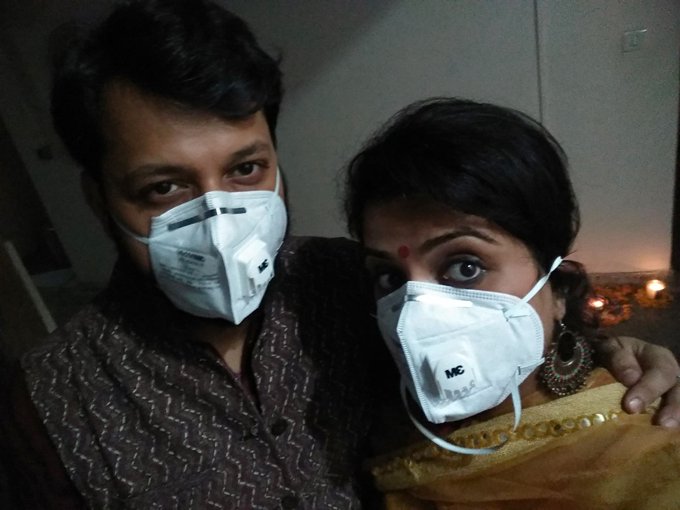
Twitter Ads info and privacy
Ritika Pandey@Reetzzy
Is this how you celebrated your Diwali?
Thanks #fearless #Delhi #DelhiAirPollution & #airquality is #999 today! Let's take some #responsibility! #DelhiGov please do something! #DelhiPollution @DelhiGovtLive @dtptraffic @ArvindKejriwal
8:02 AM - Nov 8, 2018
Report
End of Twitter post by @Reetzzy
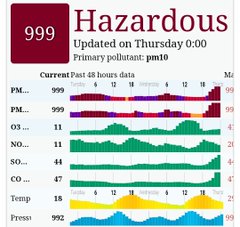
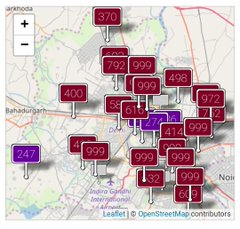
Twitter Ads info and privacy
Iain Marlow
✔@iainmarlow
Congratulations, New Delhi.
Air pollution is literally off the charts, soaring above 999.
Grimly predictable. And I can still hear fireworks going off now, after midnight, in clear contravention of the Supreme Court ban.
https://www.bloomberg.com/news/features/2018-10-21/the-world-s-fastest-growing-economy-has-the-world-s-most-toxic-air …
12:15 AM - Nov 8, 2018
Report
End of Twitter post by @iainmarlow
Others said blaming the fireworks for the spike in pollution was unfair, as low wind speeds, dust from construction sites, rubbish burning and diesel vehicles also contributed to increasing pollution levels.
Also, air quality in the city worsens every year in November and December as farmers in the neighbouring states of Punjab and Haryana burn crop stubble to clear their fields.
Skip Twitter post by @karanbhasin95
Twitter Ads info and privacy
Karan Bhasin@karanbhasin95
Replying to @karanbhasin95
I am aware of the problem of pollution, but two days ago even without crackers the air quality in Delhi was extremely poor; this suggests a mere cap on firecrackers wouldn't anyway be enough. About time, the Delhi Government takes some steps to improve Delhi's air quality!
10:39 PM - Nov 7, 2018
Report
End of Twitter post by @karanbhasin95
The Indian capital is the sixth worst place in the world for pollution, according to World Health Organisation (WHO) data.
The Graded Response Action Plan (GRAP), an emergency government initiative to try and improve conditions, has also launched around Delhi. It bans activities like rubbish burning to try and improve air quality.
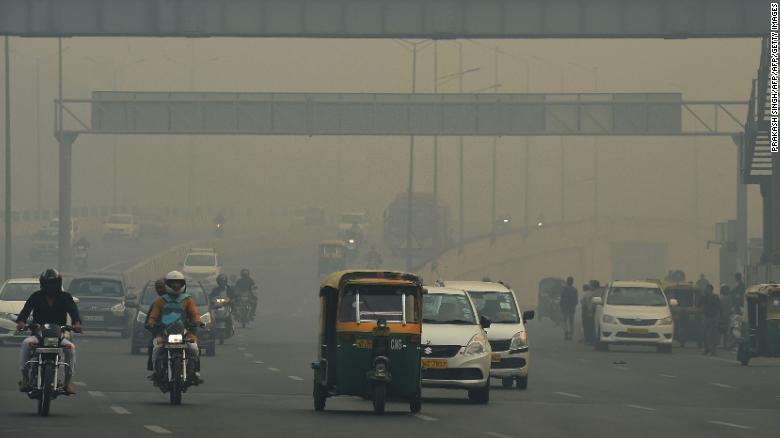
Delhi motorists travel on a busy road amid heavy smog, November 8, 2018.
Every morning, he leaves his home at 6.30 a.m. and will drive across the vast Indian capital of Delhi for the next 10 hours.
Rana, 42, is an auto rickshaw driver. The three-wheeled taxicabs, with their distinctive green and yellow livery, are a common sight on the streets of Delhi, where they provide a cheap and ready available means of transport on the city's heavily congested roads.
The job provides Rana with a steady income to help support his family, but it comes with a risk -- especially during winter -- when the city's already toxic air becomes even more lethal.
Sponsor content by Anything is Possible
‘Dear Paul, you have a long road ahead of you’
Star runner Paul Tergat tells his against-all-odds tale. As a boy, he traveled miles to his classroom on an empty stomach but courage, big plans and helping hands changed his fate
On Thursday morning, the day after Diwali, the Hindu festival of lights that is celebrated with fireworks, parts of the capital reported levels almost 40 times those considered "safe" by the World Health Organization.
"I have trouble breathing. By the time I return home, I have chest pain, I'm coughing," Rana, who has been a auto rickshaw driver for 24 years, told CNN of his experience driving during the winter smog.
"Now, when I cough, I assume it is because of the pollution."

Auto rickshaw drivers pass a building site in Old Delhi.
Worst in the world
Pollution in India is believed to be responsible for up to a million deaths a year. In Delhi, where the air is ranked among the the worst in the world, the risks are particularly acute for those whose jobs require them to be outdoors."What are our lives worth? We're prone to having breathing problems because we drive for 14 to 15 hours every day of the week," said Rahul Jaiswal, who has worked as an auto rickshaw driver for more than 20 years.
The sides of auto rickshaws are open to the elements, making drivers vulnerable to the effects of smog.
"We have been hearing in the news that breathing this air is like smoking 20 cigarettes so imagine what it's like for us," Jaiswal added.
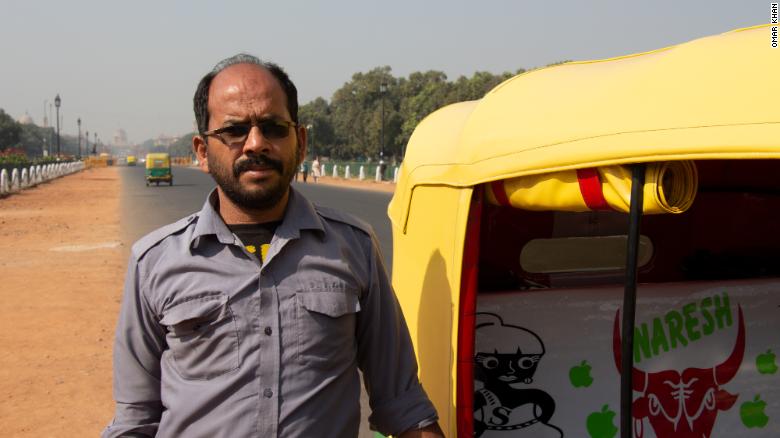
Naresh Kumar Rana spends up to ten hours a day exposed to Delhi's harmful air during the winter months.
According to Jaiswal, there has been a clear deterioration in the city's air quality in recent years. "This has been happening for the last five years, especially during the winter. The difference is huge."
Rohtas Singh, a Delhi Traffic Police officer, has also seen the air quality worsen. However, the impact on his health hasn't been as detrimental because he is provided with a special pollution mask.
"The mask provides relief. I have no health problems. I don't really have breathing troubles as I wear the mask in the mornings and evenings when the pollution is at its worse," said Singh.
Rana also tried using a pollution mask but found it offered him little relief. An effective mask like the one worn by Singh can cost around $20, a price too high for Rana, whose take home pay is equivalent to around $4 day.
Instead, Rana ties a wet handkerchief around his face when driving during times of peak winter pollution.
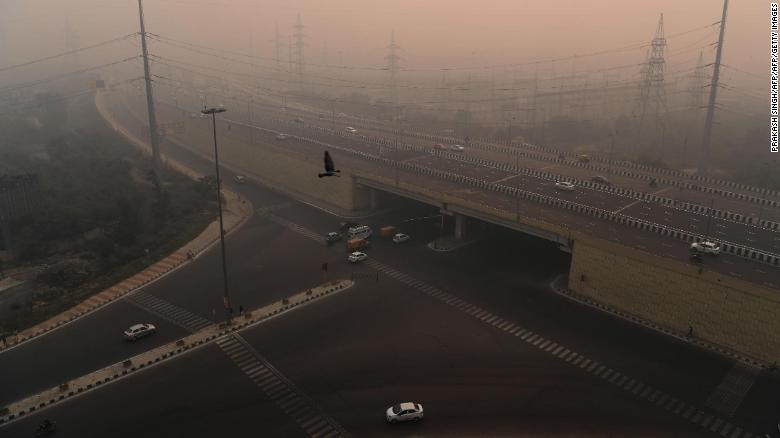
Delhi residents woke up to find the city under a thick layer of toxic pollution Thursday morning.
Delhi's air quality worsens
Air quality measurements provided by air quality monitoring stations track smog levels across the city in real time.The past week has seen air quality in the city plunge. On Thursday, the air quality index reached levels of 999 in some parts of Delhi, the highest reading available before levels go "off-the-charts."
Those levels are based on the concentration of fine particle matter, known as PM2.5, per cubic meter. The microscopic particles, which are smaller than 2.5 micrometers in diameter, are considered particularly harmful because they are small enough to lodge deep into the lungs and pass into other organs, causing serious health risks.
The World Health Organization considers a PM2.5 density below 25 micrograms to be safe.
Last month, the country's Supreme Court banned the sale of most firecrackers amid concerns that their use during the annual celebrations would again send pollution levels soaring.
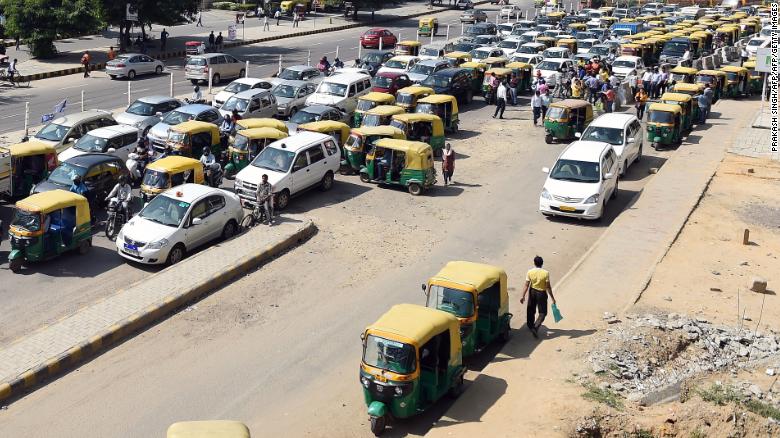
Traffic jams in Delhi are a routine occurrence, even on days with clean air.
Systemic problems
The polluting pyrotechnics aren't the sole reason behind the toxic smog. In fact, aside from periods of intense use like Diwali, they don't have much of an impact.Delhi's pollution is driven by more systemic problems such as poor infrastructure and clogged roads, aggravated by the city's unfortunate geography.
The landlocked city sits in a natural bowl and is surrounded by industrial and agricultural hubs.
Without the coastal breeze of cities such as Mumbai and Chennai, much of the pollution settles.
Known as stubble burning, millions of tons of crop residue are set alight at a time of year that typically coincides with Diwali.








0 comments: